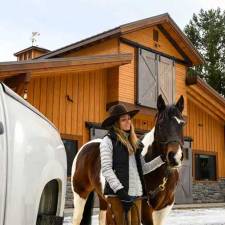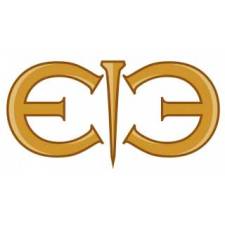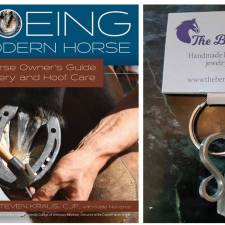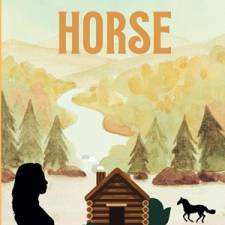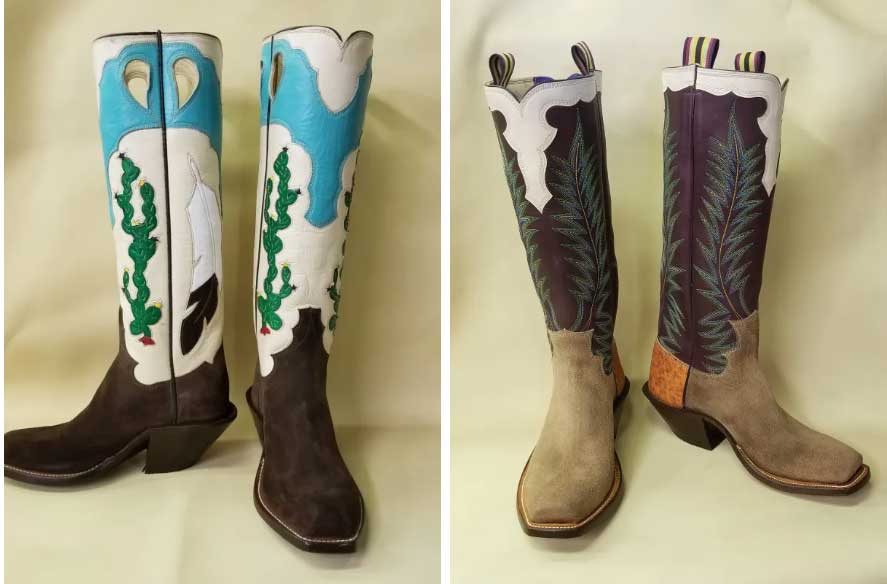
By Nick Pernokas
Tim Bishop was raised in the small, eastern New Mexico town of Logan. Tim’s high school had only 13 in his graduating class. In this rural ranching community, there were only a few choices in lifestyle for a teenager. Tim chose the most attractive one to him which was the western one.
“Everybody wore boots,” Tim remembers fondly.
Tim’s dad retired from the military in Logan and the family lived in town. Tim fell in with some of the ranch kids and was introduced to that lifestyle at a young age. One ranch family in particular, the Keiths, became his lifelong friends. The Keiths had a small saddle shop on their ranch. When Tim wasn’t helping them work cattle, he would be watching Melvin Keith build ranch saddles.
“I’d go stay with them every chance I got,” says Tim.
During high school, Tim day worked on some of the local ranches. Boots were more than a cool piece of wardrobe; they were an important tool of the trade. Tim paid attention to what a lot of the older cowboys wore on their feet. The younger cowboys wore store bought boots like Sanders and Panhandle Slim, but many of the old timers wore custom boots like Blucher and Paul Bond. The mental notes would pay off later. When Tim graduated in 1985, he got a job with the historic Tequesquite Ranch.
As time passed, Tim moved on and cowboyed on several outfits. With time on his hands at night, Tim learned to fix his own saddle and build his own leggings. By 1987, Tim was riding pens in the feed yards at Gruver, Texas. Amarillo was the closest large city to do business in. When Tim got in to Amarillo, he would always stop in Bob Marrs’ saddle shop and soak up the smell and the knowledge that circulated there. Tim also stopped by TSTI in Amarillo, and was inspired by the classes in saddle making that were offered.
Tim ordered his first pair of custom boots from Paul Bond in Nogales, while he was working in Gruver. They were a cowboy fashion statement with 18-inch bright green tops, a black waxed calf vamp with a 2 ¼-inch under slung riding heel and a round toe. He called one day to see how they were coming along. Paul answered the phone and in the course of the conversation, Paul offered Tim a job in his boot shop. Within two weeks, Tim was in Nogales working for Paul and Chris Bennett in the shop.
“It sure did open my eyes.”
Eventually, Tim became homesick for the ranches of northern New Mexico and ended up back on a ranch there. In 1989, Tim went to work for a construction crew that went all over the country burying cable. Later, he returned to New Mexico with his fiancée, Brenda, and took a job with the county.
“I’ve been all over, but I always seem to gravitate back here.”
Tim began building a few saddles in his garage in his free time. Marriage followed in 1990, and Tim started thinking seriously about a job that he would like; one that wouldn’t be so far away from the cowboy life, but a little more stable. In 1992, Tim saw an ad in an equine magazine for the Oklahoma State University Institute of Technology in Oklahoma. A visit to the saddle shop at Okmulgee followed. Tim really liked the instructor, Mike DeWitt, and felt like he could pursue his interests in saddles and cowboy gear there. By just taking the shop classes, Tim was able to cram an almost two-year curriculum into 10 months.
In 1993, Tim opened his own saddle shop in Tucumcari, New Mexico. He took any jobs he could and he made a lot of belts for New Mexico State Police officers. Boat tarp and flip-flop repairs came in from the area lakes. He continued to supplement his income by day working on the ranches outside of town. Tim realized that there were a lot of saddlemakers in the county, but not very many boot repairmen. He decided to move into the boot business.
“It was something I‘d been interested in all of my life.”
In 1994, Tim’s daughter, Bethany, was born and in 1997, the Bishops had a son, Wyatt. Both of Tim’s children frequently worked in the shop. His daughter was good at tearing down repair saddles, but didn’t pursue leatherwork as a career. Wyatt still lends Tim a hand in the shop from time to time, but he’s gone into the bit and spurmaking business under the name of Wyatt Bishop Silver Work.
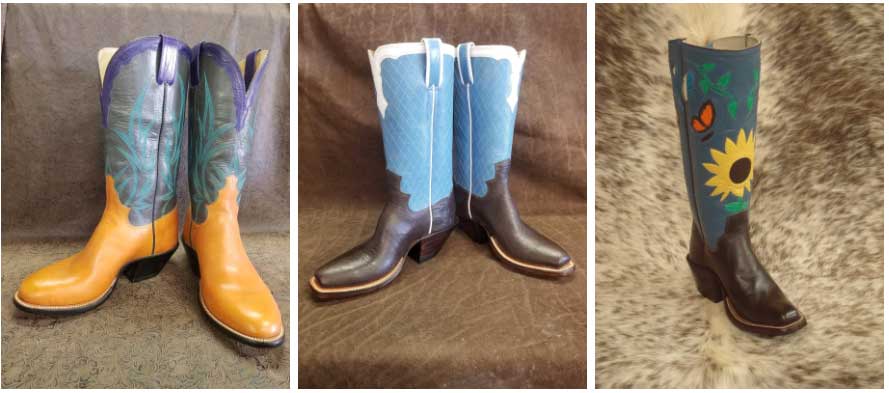
Today, Bishop’s Handmade Boots is located on a little acreage just outside of town.
“We can buy ice cream in town and be home before it melts!”
Tim credits Paul Bond with having a lot of influence on his boots. Tim has a little walk-in business and advertises in some cowboy and livestock magazines. Gone are the days of flip-flop repairs. Tim’s gotten to the point where he can just work on things that he wants to.
“We’ve learned to say no.”
Tim started out taking a lot of boot measurements by mail. Now, he will only fit the boots in person. It does cost him some business, but it has created a satisfied clientele. Most of his customers are working cowboys. He also has a share of working professionals that just like the look of cowboy boots and purchase them from him. Tim’s base price is $1500.
A majority of his boots are ordered with an under slung 1 5/8-inch to 2-inch tall “dogger” heel. Occasionally, a customer will ask for something a little punchier like a 2 ½-inch smaller based heel. The French toe is the most popular toe that he does, but he’s been getting more requests lately for the Cutter toe. When he gets down to a 1-¼ inch toe, he prefers the Fortress toe, which is an extreme square toe. It has a 1930s -1940s look that is popular now. Tim combines those retro styles with the nontraditional color schemes of the 1970s-1980s to create a look that really resonates with his customers.

“Some of those ugly colors you’d think would never go together; and then, bam, you make them and they do.”
Pigskin holds up the best in a work boot, but waxed calf will also stand up to the stirrup. Elephant is probably the toughest boot leather for someone who can afford to spend the money. Tim feels that every bootmaker will put his own spin on the same boot order.
“There’s a world of good bootmakers out there. I’d like to think that mine look ‘cowboy.’ Maybe it’s just because I was part of that world for a while.”
Brenda has retired from her job as an extension agent and at 55, Tim hopes that they’ll be able to travel and enjoy life a little more. He has no plans to quit his boot making career though, until he can’t do it well anymore.
“I’m going to finish my career building boots.”
This article originally appeared on Shop Talk Magazine and is published here with permission.
There are more interesting articles in our section on Recreation & Lifestyle.








